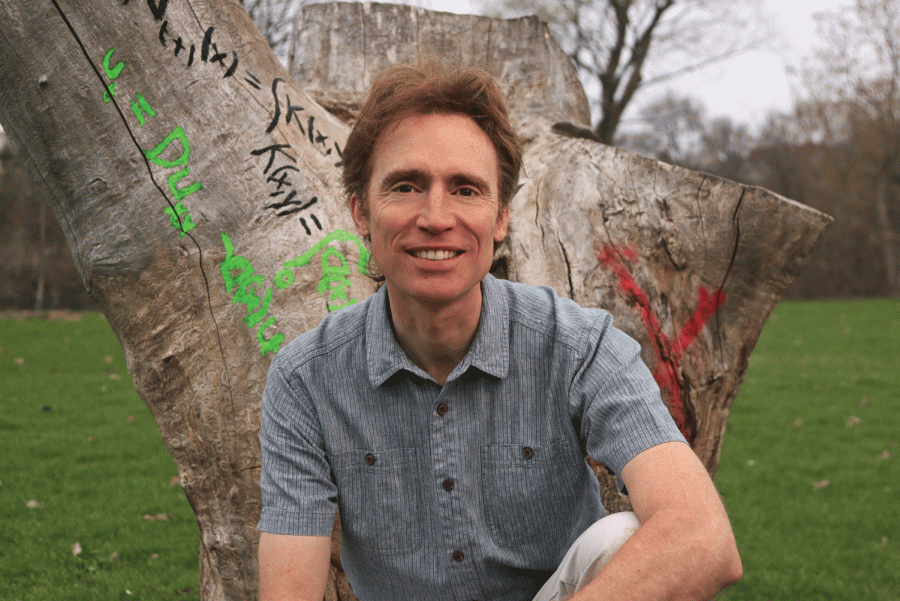Lutscher Lectures on Biological Invasions at NASC Colloquium
On September 15, Frithjof Lutscher, full-time professor at University of Ottawa, spoke about his work in species invasion and mathematical models to an intimate group of Colgate students and professors in the Robert H. N. Ho Science Center.
Although the lecture was titled, “Biological Invasions, Mathematical Models, and the Effect of Landscape Heterogeneity on Both,” the underlying title could have been “The Challenges of Discovery.” Throughout Lutscher’s research, some of which took him eight years to complete, he learned that ideas take time, and that mathematical equations must explain not only a pattern, but also reality.
Lutscher posited that biological invasions are a consequence of human interference. When humans transport organisms to new places, these organisms may damage and disturb ecosystems. Often, these disruptions to environments are hard to observe, which is why Lutscher has invested his time and effort to creating mathematical models to quantify and track species invasions and habitat fragmentation.
The Logistical Model is one such model used to measure these biological disruptions. Because population growth is not finite, an exponential solution will not help determine the final, lasting effects of a species invasion. The Logistical Model limits population growth by determining a carrying capacity, thus determining the correlated degradation of a specific habitat.
The Movement Model is another form of calculating species invasions. This model simulates the process of biological invasion, although it is not suited for analysis. It uses the diffusion equation, or heat equation, which helps interpret the amount of heat or movement produced in the field.
Lutscher adapted and adjusted his equations when he realized that although the math was correct, it didn’t biologically make sense in the real world. He was measuring the relationship between diffusion and speed, however, he was not accounting for the heterogeneity of landscape.
“I really like modeling from the ground-up. Because then if I get a result I have the feeling I can interpret this, and if I can interpret this then I can learn something,” Lutscher said.
He realized he would have to take into account every aspect of the habitats before converting biology into mathematics.
Lutscher began to define habitats as being comprised of either “good” or “bad” patches. Good patches are homogeneous areas where diffusion of a species grows linearly. Bad patches, or heterogeneous areas, display linear mortality, indicating that a species could potentially be eradicated. Originally, Lutscher applied mathematical models to landscapes as if they were all good patches.
He decided to focus on what happens at an interface between these good and bad patches. At the interfaces, there should be no gain or loss of individuals; rather, “there should be some kind of conservation of mass happening.”
With bad patches, speed is always an increasing function of diffusion. In the areas that are less hostile, either “good” patches or mild “bad” patches, we can see oscillations that correspond to high and low density over time. This study of the interface between patches allowed Lutscher to understand the effects of species invasions on specific types of habitats.
Lutscher emphasized the importance of invasion management. These mathematical equations, if not applied to the physical world, are essentially useless.
Large-scale chemicals are now used less frequently to minimize and stop biological invasions, as they are harmful to healthy ecosystems and have had limited success. Scientists are now suggesting and implementing a quasi-ring vaccination or “fire break,” both of which work to prevent the spread of invasions. Some of the preferred control measures include increasing tree diversity, removing the host if an invasive organism is host specific, and clearing infected areas.
Lutscher’s talk delved deep into mathematics. Besides understanding his process of creating mathematical equations, however, he hoped the audience learned the power of modelling.
“There are some really cool things out there that you can model with mathematics,” he said.
Contact Lucy Feidelson at [email protected].







